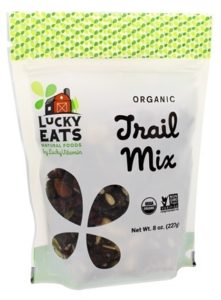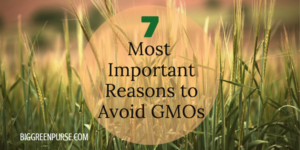Alarming levels of arsenic, a toxin that can cause bladder, lung and skin cancer, are showing up in rice. Why? It has to do with the way we grow food. Soil naturally contains some arsenic. But many of the pesticides and herbicides used on conventional farms add much more arsenic to the ground.
Consumer Reports, which did the research on arsenic contamination in rice, reports that “According to the federal Agency for Toxic Substances and Disease Registry, the U.S. is the world’s leading user of arsenic…since 1910 about 1.6 million tons have been used for agricultural and industrial purposes, about half of it only since the mid-1960s. Residues from the decades of use of lead-arsenate insecticides linger in agricultural soil today, even though their use was banned in the 1980s. Other arsenical ingredients in animal feed to prevent disease and promote growth are still permitted. Moreover, fertilizer made from poultry waste can contaminate crops with inorganic arsenic.”
Most plants absorb some arsenic when they are grown. But because rice is grown in water, it absorbs significantly more arsenic, which ends up in the rice grains we eat.
What can you do?
* Eat less rice, especially babies, kids and pregnant women – Consumer Reports recommends that “babies eat no more than one serving of infant rice cereal per day on average. And their diets should include cereals made of wheat, oatmeal, or corn grits, which contain significantly lower levels of arsenic, according to federal information.”
* Wash rice before you cook it. Rinse rice before you wash it until the water runs clear, which will help wash away some of the arsenic .
* Cook rice in a lot of water. Consumer Reports recommends cooking rice in six cups of water for every one cup of raw rice you want to cook. When the rice is done, pour off the cooking water before serving. Between washing the rice and cooking it in extra water, you can reduce your exposure to the arsenic it contains by as much as 45%.
* Vary your diet. Regardless of your age, it makes sense to vary your diet and find healthful vegetable and whole grain alternatives to rice. Replace rice cakes with popcorn, rice cereal with oats or other whole grains, rice milk with almond milk or soy milk, rice syrup with maple syrup. Replace rice pilafs with whole wheat pasta dishes, couscous, or bulgur.
* Buy more organic food. Ironically, some organic rice cereals contained levels of arsenic equal to or higher than non-organic brands. So when it comes to rice, there may be no truly safe option. Nevertheless, buying organic food generally will help reduce the amount of arsenic added to the soil and that gets into groundwater.
* Sign this petition. Anna Hackman at Green Talk started this Change.org petition to encourage the Food and Drug Administration to set specific safety levels for arsenic in our food.
Here’s the link to the original report from Consumer Reports.

















11 thoughts on “How You Can Avoid Eating Arsenic When You Cook Rice”
Great information. Thank you so much.
Thank you so much for writing about this horrible situation. I truly appreciate the petition plug. It is alarming how many people have no idea about the arsenic in their rice. Anna
Very informative. I’m trying to resist avoiding this otherwise nutritious, gluten-free food choice.
I’ve never heard of this before…I wonder if this happens in the UK where I live and how I could possibly find out?
This is not about where rice is sold, but where and how it is grown. Most rice is contaminated with arsenic, since most of it is grown in fields that are saturated with pesticides, pesticides leave behind arsenic, and the rice takes up the arsenic when it’s grown. The safest thing is to eat a varied diet, and to boil rice in a lot of water you can pour off before you eat it. Good luck.
I found this situation with high levels of arsenic in this rice so alarming is because it is inorganic arsenic, not the naturally occurring arsenic of which we can be exposed to through rice and other things as well. This is a man-made problem and requires a man-made intervention.
So glad there is a petition out there, now we just need lots of signatures!
‘@notjustgreenfingers, the EU doesn’t have any arsenic limitations either. The petition is asking both the EU and the FDA to limit arsenic in rice. In fact, a couple of years ago, there was a UK study that recommended that parents not feed their young children rice milk due to arsenic levels.
Arsenic has been found even in rice grown organically in part because there is so much chemical drift between farms that are treated with pesticides, and those that aren’t. We need more organic agriculture worldwide to help solve this problem. Thanks to everyone for your thoughtful comments.
Thank you very much because I had never wash rice before cooking, but now I will never cook it before washing.
Yes! I will do like that. Many things we ignore but these little things make big issues in future.
I never really thought that arsenic poisoning is readily accessible even in our own kitchen. I was surprised when you posted in this article that even our staple food, rice, has this harmful chemical. Thanks for the tips on avoiding it.
Comments are closed.